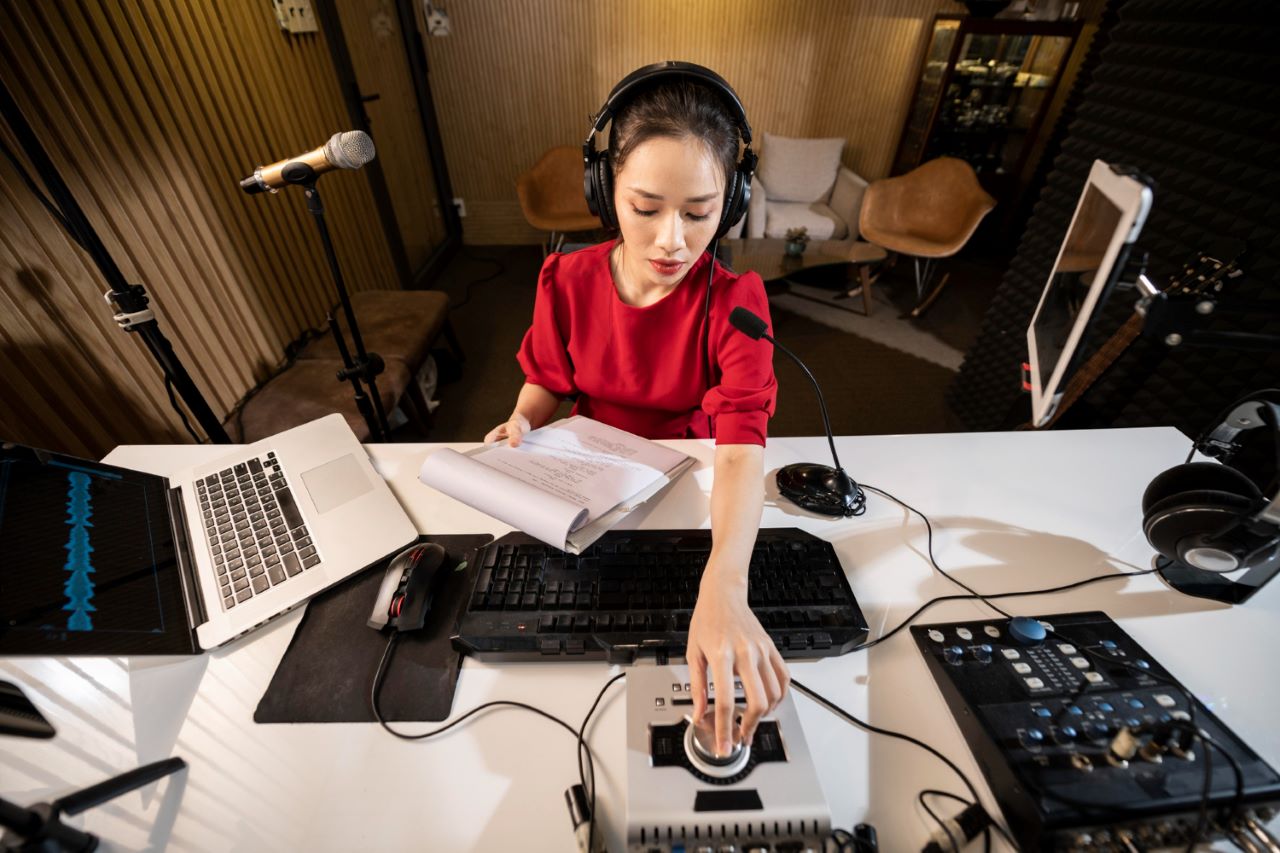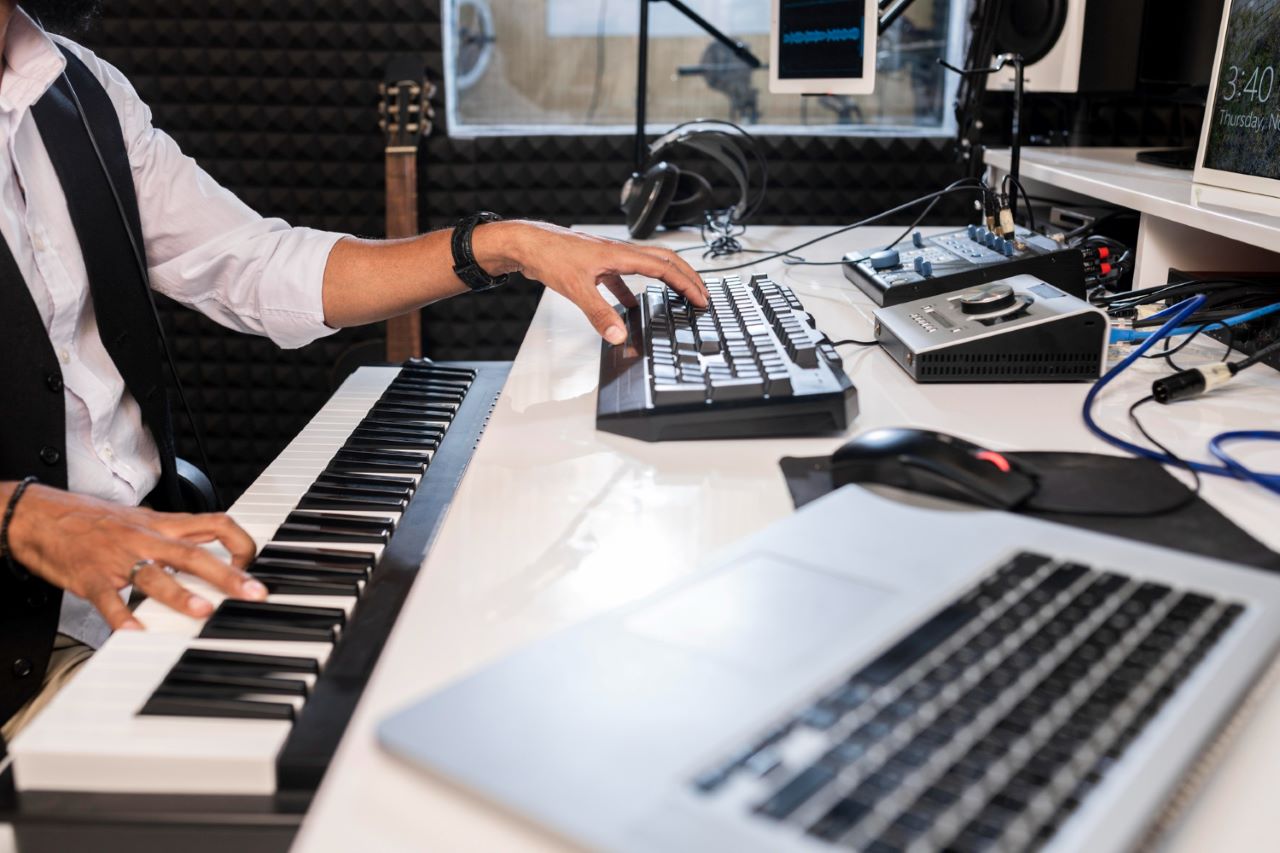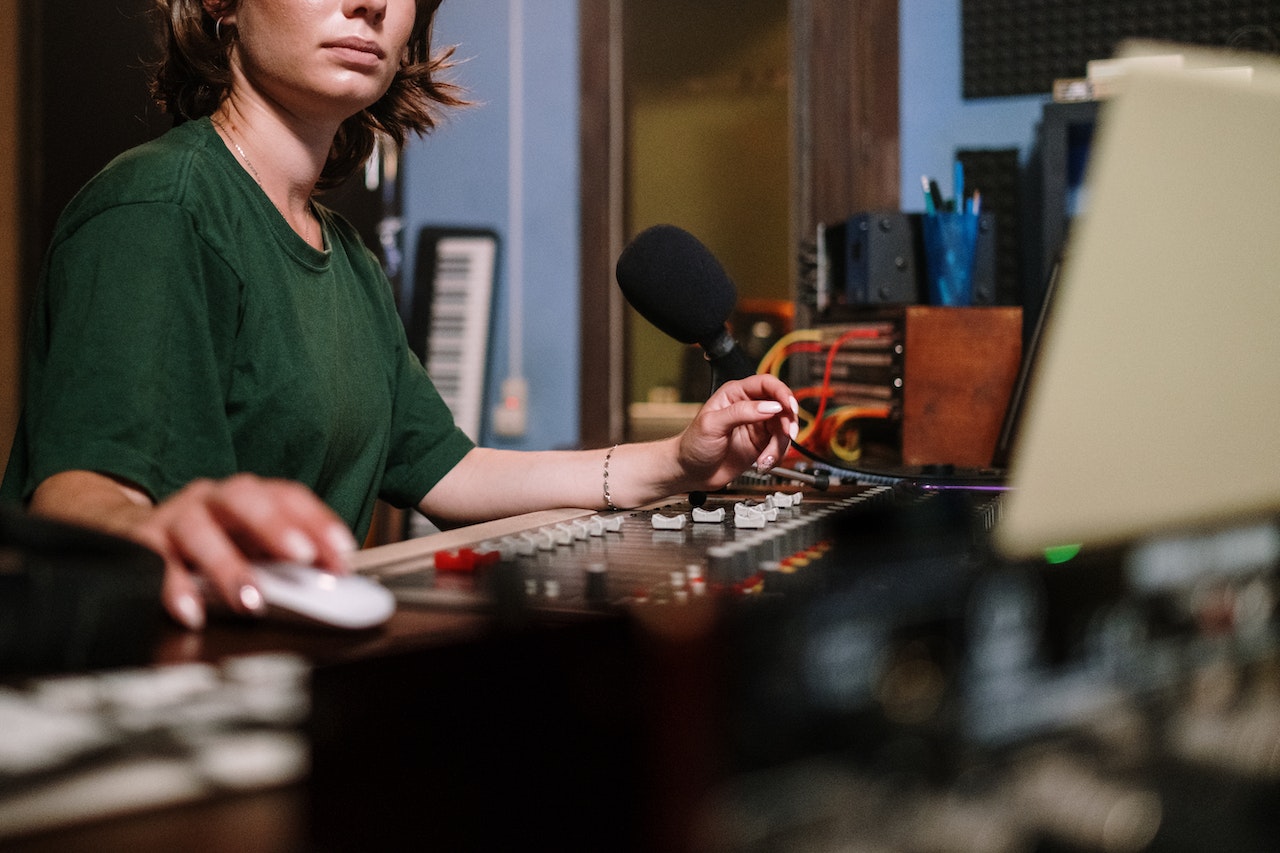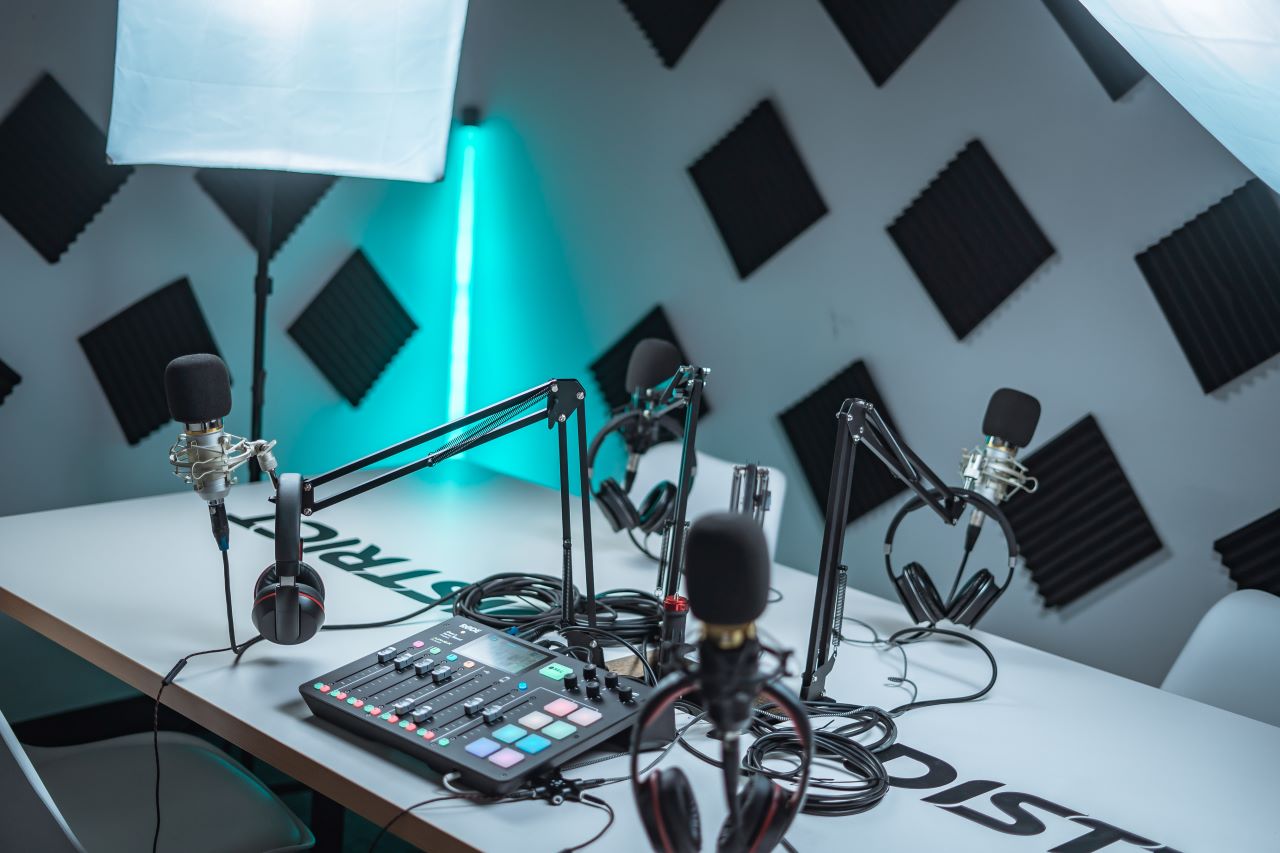You’re in your creative space, and the ideas are flowing, but there’s a hitch – your podcast audio setup seems limited. Have you ever wondered if you can expand your sonic horizons by using two audio interfaces simultaneously? Imagine the possibilities: more inputs and outputs, enhanced sound quality, and intricate audio setups becoming a breeze.
This article is your guide to exploring these possibilities. We’ll delve into the technical nitty-gritty, uncovering the potential and the pitfalls of using dual audio interfaces. Whether you’re a seasoned audio professional or a passionate hobbyist, understanding the intricacies of your audio gear is key to unleashing your creative potential.
Contents
Can You Use Two Audio Interfaces At Once?
Combining two audio interfaces to enhance your recording or production setup is indeed possible, but it’s a task that requires careful consideration and planning. This capability opens up a realm of expanded functionality, allowing for more inputs and outputs, potentially better sound quality, and more complex audio routing options.
When you connect two interfaces, you’re essentially expanding your audio environment. This could be for a variety of reasons – perhaps you need more microphone inputs for recording a drum kit or additional outputs for an elaborate monitor setup. However, integrating two interfaces isn’t as simple as just connecting them to your computer. It involves understanding and managing the technical aspects, such as driver compatibility, synchronization, and handling potential latency issues.
The key is to ensure that both interfaces can communicate effectively with your computer and with each other. This might mean using interfaces from the same manufacturer or ensuring that different interfaces can work together without conflict. In some cases, you may need to set up an aggregate device (a virtual device that groups multiple audio interfaces into one) to manage this integration smoothly, especially on systems like MacOS.
Understanding The Technical Feasibility

Image by Freepik
Before diving into the world of dual audio interfaces, it’s vital to grasp the technical landscape. Can your current setup support two interfaces? What technical hurdles might you encounter? This knowledge isn’t just academic; it’s the foundation upon which you can build a robust and versatile audio environment. Knowing what’s technically feasible sets the stage for the practical steps you’ll need to take.
How Audio Interfaces Communicate With Computers?
Audio interfaces serve as the crucial link between the analog world of sound and the digital realm of computers. The journey starts when an analog signal, like your voice or an instrument’s sound, is captured. This signal is then converted into digital data by the interface’s Analog-to-Digital Converter (ADC). Once digitized, the data travels through a connection protocol – commonly USB, Thunderbolt, or FireWire – to reach the computer.
The choice of connection impacts data transfer speed and latency. USB, widely used due to its compatibility and convenience, comes in various versions with increasing speeds – USB 2.0, 3.0, and so on. Thunderbolt, known for its high bandwidth, is ideal for handling multiple channels of audio without lag. FireWire, though less common now, still finds use in some professional setups.
On reaching the computer, this digital audio data is processed by your Digital Audio Workstation (DAW) or other audio software. After processing, the data makes the return trip. Now, the Digital-to-Analog Converter (DAC) in the audio interface converts the processed digital signals back into analog signals, which are then sent to monitors, headphones, or other output devices.
Throughout this process, clocking plays a vital role. It ensures that the conversion of audio signals remains consistent and synchronized, preventing issues like jitter and timing inaccuracies. Proper clocking is especially critical when using multiple interfaces, as misaligned clocks can lead to phase issues and degraded audio quality.
Drivers And Compatibility: Coreaudio, ASIO, And Others
The smooth operation of an audio interface heavily relies on its drivers. These software components enable communication between the interface and the computer’s operating system. In the Mac environment, CoreAudio drivers are built into the OS, offering native support and low latency performance for audio interfaces. They are known for their stability and efficiency, making them a popular choice for MacOS users.
Windows users often rely on Audio Stream Input/Output (ASIO) drivers. Developed by Steinberg, ASIO offers low latency and high fidelity, which is crucial for professional audio work. Unlike CoreAudio, ASIO drivers are usually provided by the audio interface manufacturers and need to be installed separately.
There are also universal drivers like WASAPI (Windows Audio Session API) and WDM (Windows Driver Model), but they typically offer higher latency, making them less suitable for professional applications.
Driver compatibility is key to ensuring that your audio interfaces work smoothly with your computer. Some interfaces might not be compatible with certain operating systems or DAWs, leading to issues like audio dropouts, latency, or even non-recognition of the device. Before purchasing an interface, checking driver compatibility or multi-device driver support with your system is crucial.
In multi-interface setups, driver stability becomes even more crucial. Mismatched or outdated drivers can lead to conflicts, causing system crashes or poor audio performance. Regularly updating your drivers and ensuring they are compatible with all connected interfaces will help maintain a stable and efficient audio environment.
The Concept Of Aggregate Devices

Image by Freepik
For those looking to use multiple audio interfaces simultaneously, understanding aggregate devices is essential. An aggregate device is a virtual audio interface created by combining two or more physical interfaces. This setup allows your computer to see and treat multiple interfaces as a single unit, expanding your I/O (Input/Output) capabilities.
Creating an aggregate device is relatively straightforward on a Mac. Using the Audio MIDI Setup utility, you can select the interfaces you want to combine, adjust their individual settings, and configure the master clock source. The master clock source is critical for maintaining synchronization between the interfaces, ensuring there are no timing mismatches.
On Windows, the process can be more complex due to the lack of native support for aggregate devices. However, third-party software like ASIO4ALL can help bridge this gap, allowing users to combine interfaces from different manufacturers. These tools enable you to manage the interfaces’ settings and ensure they operate in harmony.
When setting up aggregate devices, one of the main challenges is clock synchronization. All interfaces in the aggregate setup must be clocked correctly to avoid digital audio glitches like pops, clicks, or dropouts. This often involves designating one interface as the primary clock source and setting the others to follow its clock.
Another consideration is latency. Different interfaces might have varying latencies, which can lead to phasing issues or echo effects. Careful adjustment and testing are necessary to minimize these latency differences.
Setting Up Dual Audio Interfaces
Embarking on the journey of setting up dual audio interfaces can be both exciting and challenging. This process involves more than just connecting cables; it’s about creating a harmonious relationship between two separate pieces of hardware.
The goal is to achieve a setup where both interfaces work seamlessly together, enhancing your audio capabilities without sacrificing quality or stability. This setup is ideal for those looking to expand their recording, mixing, or production capacities beyond the limits of a single interface.
Step-By-Step Guide To Configuring Two Interfaces
Configuring two audio interfaces to work in tandem is a task that requires precision and attention to detail. This guide will walk you through the essential steps, ensuring that your dual interface setup is optimized for the best possible audio production experience.
1. Check Compatibility
Start by verifying the compatibility of both interfaces with your computer’s operating system and your chosen digital audio workstation (DAW). This involves checking the system requirements of the interfaces against your computer’s specifications and ensuring they are compatible with your DAW’s latest version.
2. Install Necessary Drivers
Next, install the drivers required for each interface. Visit the manufacturers’ websites to download the latest drivers. Installing up-to-date drivers is crucial as they ensure efficient communication between the interfaces and your computer, reducing the risk of crashes or compatibility issues.
3. Connect the Interfaces to Your Computer

Image by Freepik
Using the appropriate connection cables, such as USB, Thunderbolt, or FireWire, connect each audio interface to your computer. Make sure the connections are secure and that the interfaces are correctly powered on. This physical connection is the first step in establishing the data transfer path between your interfaces and the computer.
4. Create an Aggregate Device or Use ASIO4ALL
For MacOS users, open the ‘Audio MIDI Setup’ utility and create a new aggregate device. This is done by clicking the ‘+’ button and selecting the interfaces you wish to include. Windows users should install and use ASIO4ALL, a universal audio driver, to combine the interfaces into a single manageable unit.
5. Configure Master Clock Source
Designate one interface as the master clock source. The other interface should be set to follow (slave) this master clock. Proper clock synchronization is vital for preventing timing discrepancies, which can lead to audio glitches.
6. Set Up in Your DAW
Launch your digital audio workstation and select the newly created aggregate device (Mac) or ASIO4ALL driver (Windows) as your primary audio device. From there, configure the input and output channels according to your specific recording or production needs.
7. Test and Adjust Latency Settings
Perform a test recording to evaluate for any latency or timing issues. If necessary, adjust the buffer size and sample rate settings in your DAW or on the interface’s software. These adjustments can help optimize your system’s performance and reduce latency.
8. Fine-Tune Settings for Both Interfaces
Each interface may have its own unique settings that need adjustment, such as input gain levels, phantom power, or output volume. Tailor these settings to match the requirements of your specific recording or production setup.
9. Regularly Update Software and Drivers
Keep your system up-to-date by regularly checking for and installing updates for your interface drivers and any relevant software. This ensures that your setup remains compatible with the latest operating system and DAW updates.
10. Monitor and Troubleshoot
Finally, it’s important to regularly monitor your setup. Keep an eye out for any synchronization issues or unexpected changes in performance. If you encounter problems, check all connections, restart your system, or revisit your configuration settings to troubleshoot and resolve the issue.
These detailed steps provide a comprehensive approach to setting up and configuring dual audio interfaces, ensuring a stable and high-quality audio production environment.
Troubleshooting Common Setup Issues
Even with a meticulous setup, you might encounter issues when running dual audio interfaces. Knowing how to troubleshoot these common problems is key to maintaining a smooth, uninterrupted workflow. Here are some typical issues you might face and how to resolve them:
Unstable Connection or Recognition Issues
If one or both interfaces are not being recognized by your computer, or if the connection seems unstable, start by checking all physical connections. Ensure that cables are securely plugged in and undamaged. If using USB interfaces, try different USB ports or a powered USB hub, as power limitations can sometimes cause recognition issues. Also, restart your computer and interfaces to reset the connections.
Driver Conflicts
Driver conflicts are a common problem when using two different interfaces. To resolve this, uninstall any unnecessary or outdated drivers from your computer. Make sure you have the latest drivers installed for both interfaces. If issues persist, try using a dedicated driver like ASIO4ALL for Windows, which can help manage and support multiple devices more efficiently.
Audio Dropouts or Glitches
Audio dropouts or glitches can often be traced back to buffer size and sample rate settings. If these settings are too low, your computer might not process audio quickly enough, leading to dropouts. Try increasing the buffer size or adjusting the sample rate in your DAW. Also, check the CPU usage of your computer; a high CPU load can lead to similar issues.
Synchronization Errors
Synchronization problems, such as noticeable delays or phasing between interfaces, often occur if the clock source is not correctly configured. Ensure that one interface is set as the master clock and the other as a slave. If your interfaces have external clocking options, consider using a dedicated word clock for improved synchronization.
Inconsistent Audio Levels or Quality
Inconsistent audio levels or varying audio quality between interfaces can hinder your production. This might be due to different preamp qualities, gain staging, or digital conversion processes in each interface. Try to match the audio input levels as closely as possible and use similar-quality cables for both interfaces. If necessary, adjust the gain and output levels within your DAW to compensate for any discrepancies.
Software Incompatibility
Sometimes, the issue lies with the digital audio workstation (DAW) or other software not properly recognizing or supporting dual interfaces. Check for any updates or patches for your DAW that might improve compatibility. In some cases, you may need to consult the DAW’s user forums or contact customer support for specific advice on dual interface setup and compatibility.
Each of these issues highlights a common challenge in dual audio interface setups, providing practical solutions to keep your system running smoothly.
Final Words
In the world of digital audio production, expanding your setup with dual audio interfaces offers a realm of possibilities, from increased I/O capacity to enhanced sound quality. This article has guided you through the essentials, from understanding how audio interfaces communicate with computers to setting up multiple audio devices and troubleshooting common issues.
We’ve covered the importance of driver compatibility, the intricacies of aggregate devices, and the step-by-step process of configuring two interfaces to work in harmony.
Remember, while using two interfaces simultaneously can elevate your audio experience, it requires careful planning and technical understanding. Paying attention to details like driver updates, clock synchronization, and system compatibility is crucial. By following the outlined steps and keeping an eye out for common issues, you can create a robust and efficient dual-interface setup that meets your specific audio needs.
In conclusion, the journey of integrating two audio interfaces is as rewarding as it is challenging. With the right knowledge and approach, you can transform your audio workflow, pushing the boundaries of creativity and technical excellence.
Related: Best Podcast Mixers

